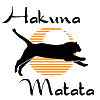Hakuna Matata
CS 486C: Capstone
Spring 2011
About Us
We are student software development team from Northern Arizona University currently working on an immense capstone project for the Clean Air Action Corporation who supports a sustainable development project know at the International Small Group and Tree Planting (TIST) program. The TIST program empowers subsistence farmers in East Africa, India, and Central America to reverse the devastating effects of deforestation, drought, and famine through the planting of trees. To gain a better understanding of the TIST program, additional information can be found at tist.org.
Our Mission
The clients for our system are Charlie Williams and Mike Kasper. They are both employees for the Clean Air Action Corporation. Mr. Williams is currently the vice president of the corporation and Mr. Kasper is in charge of the MIS (Management Information Systems), while also bestowing the job as Database Administrator. Both have dedicated their lives to a sustainable development project known as TIST, which empowers subsistence farmers in East Africa, India, and Central America to reverse the devastating effects of deforestation, drought, and famine through the planting of trees. Specifically, TIST creates a communication and administrative structure which addresses health and environmental issues by promoting the planting of trees and development of agriculture. TIST expects to provide long-term revenue for the small group participants through the sale of GhG.
The success of the TIST program greatly relies on the accurate information collected for the program's current trees and other project areas (also known as grove tracts). The data is captured and entered into fields supported by Pendragon which is done by hired TIST quantifiers using Palm PDA devices known as the Zire 71 and Palm smart phones such as, currently, the Centro. These palm devices are used in conjunction with GPS data collectors. TIST quantifiers collect this GPS data in a variety of ways to georeference the other information being collected related to valid project areas. Acreage, the third party GPS application currently used by TIST for collecting tract data, has become outdated and no longer meets TIST's needs.
The TIST Program collects and reviews GPS data in a number of different ways. While Acreage has become inadequate and substandard, the development of a new GPS application that is fully capable of meetings the programs demands is in dire need. The basic key features required are as follows:
1. Collecting, saving, and loading tracts
2. Calculating the area, length and other basic information about a tract
3. Pausing and editing of a tract while it is being collected
4. Reviewing multiple tracts at the same time
5. Navigating a user to a single GPS location
6. Allowing the user to navigate to an existing tract (whether stored from a previous monitoring event or recently taken)
